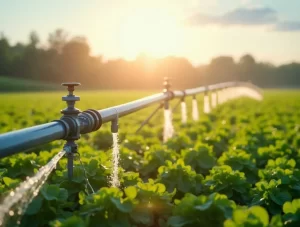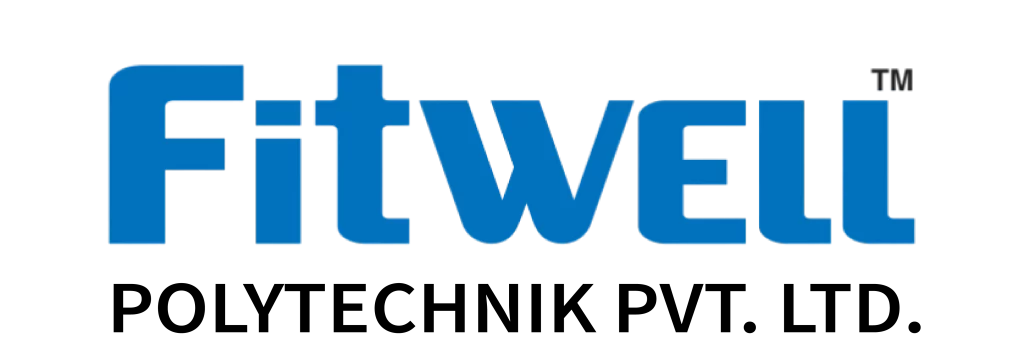Essential 2025 Guide to UPVC Pipe Fittings for Smart Buyers

Introduction to uPVC Pipe Fittings: Understanding the Basics
uPVC pipe fittings are integral components for modern water systems, offering durability, efficiency, and environmentally friendly solutions. Unlike PVC pipes, uPVC pipes are free from plasticizers, making them safer for transporting potable water. This uPVC pipe fittings guide for commercial, home, and industrial use highlights their versatility across multiple applications. Buyers need to understand that uPVC pipes and fittings stand apart due to their high resistance to chemical corrosion, lightweight nataure, and easy installation process.
Key advancements and innovations in uPVC pipe manufacturing have introduced features like enhanced pressure tolerance and leak-proof designs, addressing critical performance areas. Understanding how to install uPVC pipe fittings: a step-by-step guide is crucial for ensuring proper connectivity and efficient system functioning. When comparing uPVC vs PVC pipes: key differences, uses, and durability, uPVC surpasses as a long-lasting, low-maintenance option. Exploring everything you need to know about uPVC pipe fittings equips buyers with the knowledge to choose safe, reliable water solutions and stay informed about evolving trends in the industry.
Why uPVC is the Material of Choice in 2025
uPVC pipes and fittings have risen as the leading choice for plumbing and industrial applications in 2025 due to their unparalleled durability, cost-effectiveness, and environmental compatibility. Unlike traditional alternatives, uPVC offers corrosion resistance, making it ideal for water systems in home and industrial settings. Recent innovations in uPVC pipe manufacturing highlight advancements such as improved thermal stability and enhanced chemical tolerance.
Extensive research comparing uPVC vs PVC pipes underscores uPVC’s superior lifespan, reduced maintenance, and safer application in potable water systems. Smart buyers benefit from guides like “How to Install uPVC Pipe Fittings: A Step-by-Step Guide” and expert insights on safe and efficient solutions. Intelligent design and resilient performance solidify uPVC’s status in 2025.
Key Advantages of Using uPVC Pipe Fittings in Modern Plumbing
uPVC pipes and fittings have gained widespread recognition across residential, commercial, and industrial sectors. Their growing popularity stems from advancements in their manufacturing, making them a reliable option for water systems. Here are the standout advantages:
- Durability and Longevity: uPVC pipe fittings are resistant to corrosion, scaling, and chemical reactions, unlike traditional metal alternatives.
- Cost-Effectiveness: Their lightweight nature reduces transportation and labor costs.
- Environmentally Friendly: Being recyclable ensures less environmental impact.
- Easy Installation: Guided by “how to install uPVC pipe fittings—a step-by-step guide,” they offer hassle-free assembly.
- Thermal and Electrical Resistance: Ideal for safeguarding plumbing lines in diverse climates and settings.
Versatility: Suitable for varied applications, including innovations in uPVC pipe manufacturing for smart water systems.
Types of uPVC Pipe Fittings: A Comprehensive Overview
Understanding the wide variety of uPVC pipe fittings is crucial for selecting safe and efficient solutions for water systems. These fittings, pivotal in both residential and industrial setups, enable seamless installation and maintenance of plumbing systems. The ultimate guide to uPVC pipes and fittings for home and industrial use highlights their adaptability and durability compared to PVC.
Key Types of uPVC Pipe Fittings:
- Elbows: Essential for connecting pipes at angles, ensuring a perfect fit for complex layouts.
- Couplings: Used to join two straight sections, offering a leak-proof connection.
- Reducers: Enable transitions between pipes of varying diameters for versatile plumbing designs.
- Tees: Serve to split or combine flow within water systems, vital in intricate configurations.
- End Caps: Designed to seal the ends, preventing leaks and ensuring system integrity.
- Unions: Facilitates easy dismantling for routine maintenance, a necessity in commercial use.
Innovations in uPVC pipe manufacturing have also introduced specialized options, reflecting advancements in industry needs.
How to Choose the Right Size and Style for Your Needs
Selecting the appropriate size and style of UPVC pipe fittings is crucial for ensuring safe, efficient, and durable water systems. Factors like system pressure, flow requirements, and the specific application—whether home, industrial, or commercial—must guide the decision. To determine the correct size:
- Measure Accurately: Pipe diameters should align with your system’s flow requirements.
- Consult the Application: Smaller diameters suit residential needs, while larger sizes handle industrial systems.
Styles also vary by use, including elbows for angled connections, tees for branch lines, or adapters for PVC compatibility. Leverage advancements in UPVC pipe manufacturing and consider everything you need to know about UPVC pipes’ durability and efficiency before purchasing.
Top 2025 Trends in uPVC Pipe Fittings for Smart Buyers
The uPVC pipe fittings industry continues to evolve, integrating groundbreaking technologies and sustainable practices. Buyers should anticipate these key trends:
- Smart Irrigation Integration: Innovations in uPVC pipe manufacturing now enable precise water control, ensuring efficiency for agriculture and landscaping applications.
- Sustainable Materials: Enhanced eco-friendly production methods are introducing recycled uPVC materials, appealing to environmentally conscious buyers.
- Tool-Free Installation Systems: Simplified “click-and-lock” mechanisms address how to install uPVC pipe fittings with minimal tools.
- Advanced Durability Standards: Reinforcements in design are boosting resistance to temperature variations and chemical exposure compared to PVC alternatives.
- IoT-Ready Solutions: Smart households adopting the Internet of Things (IoT) benefit from uPVC fittings equipped with sensors to monitor water flow and efficiency.
These developments highlight safe, efficient solutions for modern water systems.
Step-by-Step Guide to Installing uPVC Pipe Fittings
Installing uPVC pipe fittings requires careful attention to detail and adherence to best practices for optimal performance in water systems. This step-by-step guide ensures safe and efficient solutions for both home and industrial setups, as covered in the ultimate guide to uPVC pipes.
- Gather Required Tools and Materials Assemble tools such as a PVC cutter, measuring tape, deburring tool, cleaning solution, and appropriate solvent cement. Ensure the selected uPVC pipes and fittings meet durability requirements outlined in uPVC pipe fittings: everything you need to know.
- Cut Pipes to the Required Length Measure the desired pipe length, then cut using a PVC cutter for a clean edge. Refer to how to install uPVC pipe fittings: a step-by-step guide to avoid mistakes during this process.
- Deburr and Clean the Ends Use a deburring tool to smooth the edges of the cut pipe. Completely clean the ends with a specialized cleaning solution to ensure proper adhesion.
- Dry Fit the Pieces Insert the pipe into the fitting without adhesive to confirm proper alignment and fit. This is crucial as highlighted in innovations in uPVC pipe manufacturing: trends and advancements to prevent leaks.
- Apply Solvent Cement Brush the solvent cement evenly onto the pipe and fitting. Work quickly as cement dries fast. This process emphasizes safe, efficient water systems found in the ultimate guide to uPVC pipes.
- Join and Hold in Place Insert the pipe into the fitting and hold firmly for 30 seconds to form a secure bond. Ensure no gaps, demonstrating the durability and reliability noted in uPVC vs PVC pipes: key differences uses.
- Allow Sufficient Cure Time Let the connection cure as per the manufacturer’s guidelines for a robust, leak-proof seal. This aligns with what’s new in the industry: innovations in uPVC pipe manufacturing.
Test the System Inspect for any leaks by running water through the completed system. Address issues immediately for long-term functionality.
Maintenance Tips for Long-lasting and Efficient uPVC Systems
Proper maintenance ensures that uPVC pipes and fittings perform optimally and last longer, whether in residential, commercial, or industrial applications. Regular care helps preserve their integrity, enhance efficiency, and reduce costs in the long term.
Key Maintenance Practices for uPVC Systems
- Inspect Regularly: Conduct routine checks for leaks, cracks, or damage in the uPVC pipes and fittings. Early detection prevents major issues.
- Clean Periodically: Clear debris and buildup inside pipes to maintain water flow efficiency. Use non-abrasive cleaning agents to avoid surface deterioration.
- Prevent Sun Exposure: UV radiation can weaken uPVC materials over time. Consider insulating exposed pipes or using UV-resistant variants.
- Monitor Pressure: Ensure operating pressure adheres to specified limits to avoid stress-related failures.
- Use Compatible Add-ons: Always use fittings, adhesives, and accessories designed specifically for uPVC systems to preserve quality.
Adhering to these practices significantly improves durability and efficiency in uPVC piping systems.
Common Mistakes to Avoid When Using uPVC Pipe Fittings
Inadequate attention to proper techniques when working with uPVC pipe fittings often leads to inefficiencies or failures in water systems. Here are crucial missteps to avoid:
- Improper Sizing: Selecting incorrect sizes disrupts system efficiency. Always measure pipes and fittings accurately to maintain a secure, leak-proof connection.
- Ignoring Manufacturer Guidelines: uPVC pipe fittings guides for commercial and residential applications provide specific temperature and pressure limits; ignoring these can cause damage.
- Over-Tightening Joints: Excessive force on threaded fittings risks cracking. Moderation ensures longevity.
- Incompatible Materials: Combining uPVC with incompatible seals, glues, or metals can degrade performance due to chemical reactions.
Skipping Cleaning: Failure to clean and prepare pipe ends often undermines adhesive bonds.
Eco-Friendly and Cost-Effective: The Sustainability of uPVC
uPVC pipes and fittings offer significant environmental and economic benefits, making them an exceptional choice for modern water systems and infrastructure. Unlike traditional materials, uPVC (unplasticized polyvinyl chloride) is highly durable, ensuring a longer lifecycle with minimal maintenance. Its manufacturing process consumes less energy compared to alternatives, supporting sustainability efforts.
The lightweight nature of uPVC reduces transportation emissions, while its recyclability aligns with green principles. Innovations in uPVC pipe manufacturing trends and advancements continue to enhance efficiency and eco-friendliness. Moreover, compared to PVC, its composition avoids harmful plasticizers, emphasizing safer systems for home and industrial use.
Comparing uPVC to Other Materials: What Makes it Superior?
When examining uPVC pipes and fittings alongside materials like PVC, copper, or metal alloys, several distinctive advantages emerge. uPVC stands out for its unmatched durability, being resistant to corrosion, impact, and chemical degradation, making it suitable for home and industrial applications. Unlike copper, which is prone to oxidation, uPVC offers a longer lifespan without requiring maintenance.
uPVC’s lightweight design ensures easier transportation and installation compared to heavier materials like galvanized steel. Innovations in uPVC pipe manufacturing have also enhanced its thermal insulation and pressure tolerance, ideal for modern water systems. Cost-efficiency, combined with eco-friendliness, further solidifies uPVC’s position in today’s market.
Top Brands and Trusted Manufacturers for uPVC Pipe Fittings in 2025
The uPVC pipe fittings industry in 2025 highlights innovations in uPVC pipe manufacturing and a growing emphasis on safe and efficient solutions for water systems. Leading brands specialize in providing durable and high-quality products tailored for residential, commercial, and industrial use. Top manufacturers focus on advancements in production to meet global demand.
Key market players include:
- Ashirvad Pipes: Known for consistent quality and adherence to global standards in uPVC pipe and fitting solutions.
- Supreme Industries: Offers versatile products designed for diverse applications, including water systems and drainage.
- Astral Pipes: Innovators in uPVC manufacturing trends, prioritizing durability and eco-friendly solutions.
- Finolex Industries: A trusted name for uPVC Vs PVC pipes, emphasizing key differences and robust designs.
Prince Pipes: Renowned for comprehensive options and safe solutions for commercial and home use.
Frequently Asked Questions About uPVC Pipe Fittings
Here are answers to common queries about uPVC pipe fittings to guide smart buyers in choosing durable, efficient solutions for their projects.
- What are uPVC pipe fittings used for? uPVC pipe fittings are widely utilized in residential, commercial, and industrial applications. They are ideal for water systems, drainage, and plumbing due to their non-corrosive, durable nature.
- How are uPVC fittings different from PVC fittings? uPVC lacks plasticizers, making it stronger and more resilient. Unlike PVC, it is ideal for safe water transport and environments requiring high durability.
- Are uPVC pipe fittings easy to install? Installation is straightforward when following how to install uPVC pipe fittings: a step-by-step guide. Tools such as adhesives and cutting equipment simplify the process.
- What are the latest innovations in uPVC pipe manufacturing? Manufacturers are adopting advancements like eco-friendly processes and better reinforcement techniques to enhance durability, efficiency, and sustainability.
- Can uPVC pipe fittings be used for industrial purposes? Yes, uPVC fittings are an integral part of industrial piping systems due to their chemical resistance and high tensile strength.
- How durable are uPVC pipes compared to alternatives? uPVC pipes are highly durable, lasting for decades with minimal maintenance, making them a smart purchase for long-term projects.
Reference guides like The Ultimate Guide to uPVC Pipes and Fittings for Home and Industrial Use can offer deeper insights.
Stay on the forefront of industry trends by checking out our latest content
Stay ahead with our latest content, designed to keep you informed on the newest industry trends and insights. Discover valuable updates that help you lead in your field.

Trusted uPVC Pipes Manufacturers for India’s Top Contractors
Introduction: The Surge in Demand for uPVC Pipes Among Top Contractors in India The construction and infrastructure sectors in India have witnessed a significant transition toward sustainable and long-lasting materials.

Top Innovations in Agricultural Pipe Fittings for Water Savings [2025]
Introduction to Agricultural Pipe Fittings and Water Sustainability Agricultural pipe fittings play a pivotal role in building efficient irrigation systems, crucial for modern farming practices. By exploring the versatility of

Expeart Tips from MDPE Pipe Fittings Manufacturers to Avoid Failures
Expeart Tips from MDPE Pipe Fittings Manufacturers to Avoid Failures Understanding MDPE Pipe Fittings: An Overview MDPE (Medium Density Polyethylene) fittings, used extensively in gas and water systems, offer strong,
Request a Free Consultation
Get personalized plumbing solutions with a free consultation from Fitwell.

